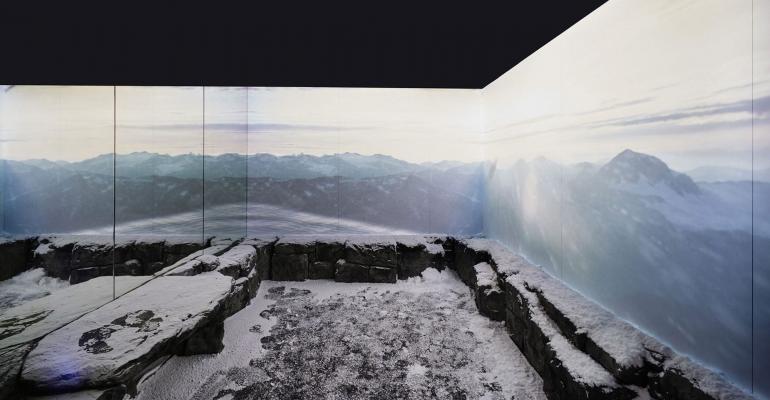(Bloomberg)—Canada Goose Holdings Inc. will open a retail space in a Toronto mall this week, but calling it a store might be a stretch.
There is no product inventory in what the company has dubbed “The Journey,” but visitors can try on the brand’s $1,000 parkas in a snow-filled room that dips down to -12 degrees Celsius (10 degrees Fahrenheit). That comes after “The Crevasse,” which mimics traversing an icy rock face, and then being treated to 4K video walls of Canadian landscapes. The experience ends with an employee, who’s been acting as a personal tour guide, helping the customer shop online via touchscreen.
This experiment is the latest example of the “Disney-fication” of the retail environment, which puts customers at the center of an adventure, according to Markus Giesler, an associate professor of marketing at York University’s Schulich School of Business in Toronto. Actual in-store transactions matter less than arousing shoppers’ interest, he says.
“The focus has shifted away from the store as a point of purchase,” Giesler says. With buying moving online, “the point of falling in love with the product or brand, that’s what’s happening in those stores.”
The opening of this location on Thursday marks Canada Goose’s 20th and continues its push into relying less on wholesale accounts, like department stores. It’s a common transition for apparel companies, as they evolve into retailers with a fleet of stores and e-commerce to boost profit margins and branding. The company generated 52% of its $831 million in sales from selling directly to customers in the fiscal year through March—that’s almost double from two years earlier.
“We are pushing the boundaries of traditional retail and experimenting to see how an inventory-free format, where experience comes first, works,” says Dani Reiss, Canada Goose’s chief executive officer. “Brand awareness and customer engagement are key goals for the store.”
The retail expansion also comes as investors question if Canada Goose can maintain sales growth that’s averaged 42% the past three years. Department stores are struggling and the brand has faced heightened scrutiny over the use of coyote fur trim on its coats since going public in 2017. The stock is down 13% this year.
By experimenting with experiences over transactions, Canada Goose has joined a growing list of brands using stores to help generate social-media buzz and give online shoppers a reason to visit. Last year, it started installing cold rooms in some stores, and now it’s going further.
The Toronto store is also a sign of how intertwined online and in-store shopping have become. Customers at the new location will walk out bag-free, with their purchase from a digital catalog delivered—on the same day for some. While selected garments are displayed, explained, and worn in the cold room, the store doesn’t have inventory, another emerging trend recently embraced by Nordstrom Inc. to attract convenience-hungry city dwellers.
However, the risk with experiential stores is that a brand can raise the bar too high.
“It creates expectations that become higher and higher,” says Schulich’s Giesler. “Consumers get easily bored. Then they’re expecting for you to come out with an even greater and more captivating experience next season. That definitely is a problem.”
To contact the authors of this story: Sandrine Rastello in Montreal at [email protected]
Paula Sambo in Toronto at [email protected].
To contact the editor responsible for this story: Matthew Townsend at [email protected]
© 2019 Bloomberg L.P.




